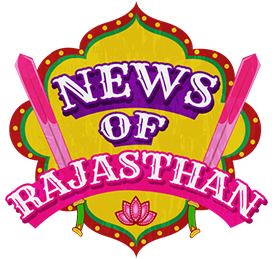
MATSYA FESTIVAL (25-26 NOVEMBER)
The Matsya festival of Alwar held in November over two days is the foremost of all fairs and festivals of Rajasthan. It is celebrated to glorify the prosperity, traditional values and colourful customs of the region. This festival is renowned for its colourful processions, cultural performances, an array of sporting events and impressive artistic exhibitions. The magnificence of Alwar’s numerous palaces and forts, lakes, hunting lodges, archaeological sites and thick forests, make it a delightful setting for a flamboyant celebration.
ALWAR (THE CITY OF THE RAJPUTS)
Alwar is a where the journey of the Fairy Queen ends! The oldest working engine in the world and one of India’s national treasure, Fairy Queen leads a train from Delhi encampment to Alwar in Rajasthan. The engine was built in 1855 and acquired by the Eastern Indian Railways from a British firm. The train that harnesses this engine is now used for tourism.
The journey of the city of Alwar and its origins can be traced back to 1500 BC. Nestled in the lap of the green hills of the Aravalli range, it is home to beautiful palaces and forts from an era long gone. The deep valleys and thick forest cover of the hills are a haven for many species of birds such as grey partridge and white-throated kingfisher and animals, most notably, the Bengal tiger and golden jackal. It is this splendour and exquisite architecture, along with the calm lakes, royal hunting chalets, dense jungles and a socio-cultural environment unlike any other that makes Alwar a traveller’s delight.
Alwar is one of the oldest cities in Rajasthan. Paradoxically, the city is also the most recent of the Rajput kingdoms. Its traditions can be traced back to the realms of Viratnagar that flourished here around 1500 BC. Also known as Matasya Desh, this is where the Pandavas, the mighty heroes of the Mahabharata, spent the last years of their 13-year exile.
ATTRACTIONS & PLACES TO VISIT AND EXPLORE IN ALWAR
BALA QILA
The Bala Qila (young fort) was built on the foundations of a 10th century mud fort and is a towering structure set atop a hill. Strong fortifications, graceful marble columns and delicate latticed balconies make up the fort. Bala Qila can be entered through six gates, namely Jai Pol, Suraj Pol, Laxman Pol, Chand Pol, Krishan Pol and Andheri Gate.
ALWAR CITY PALACE
Built in 1793 AD by Raja Bakhtawar Singh, the City Palace is an amazing mélange of the Rajputana and Islamic styles of architecture. The highlight of this palace are graceful marble pavilions set on lotus flower bases in the central courtyard. The palace that once belonged to the Maharaja has been converted into the District Collectorate. Its grand halls and chambers now house government offices.
THE PALACE MUSEUM
The Palace Museum is a must-visit for anyone with an interest in the opulent life and lifestyle led by the Maharajas of Alwar. Rare manuscripts, including one depicting Emperor Babur’s life, Ragamala paintings and miniatures and even historic swords that once belonged to Muhammad Ghori, Emperor Akbar and Aurangzeb can be found here.
MOOSI MAHARANI CHHATRI
This cenotaph, built in the memory of Maharaja Bakhtawar Singh and his queen, Rani Moosi, reflects the Indo-Islamic style of architecture. The upper portion comprising columned pavilions and domed arches is made of marble while the lower section consists of pillars in red sandstone. The memorial is rated as one of the finest of its type.
FATEH JUNG GUMBAD
This spectacular tomb, which is a combination of domes and minarets is an artistic marvel. Constructed from high quality sandstone, its massive dome can be seen from afar and is a blend of Hindu and Muslim architecture. It is dedicated to Fateh Jung who was a kind-hearted minister of the Mughal Emperor, Shah Jahan.
PURJAN VIHAR
One has Maharaja Sheodan Singh to thank for this attractive garden that was conceptualised and constructed in 1868. A picturesque place, locally known as Simla (the Summer House) was added to this garden to provide respite from the blazing sun.
BHANGARH
Fifty kilometres from Sariska Sanctuary is the splendid town of Bhangarh which was built in the 17th century by Raja Madho Singh. The most popular legend states that the town was cursed by an evil magician and was subsequently abandoned. The evil effect of the curse is believed to be working even to this day. In fact, Bhangarh holds the distinction of being one of the most haunted places in India.
GARBHAJI WATER FALLS
Garbhaji Falls is a popular destination for foreign and local tourists. The breathtaking sight of the water cascading off the rocks is the best feature of the place. Ideal for photographers and nature lovers, it is also popular with people who love to explore a city beyond its man-made structures.
HILL FORT KESROLI
This 14th century fort is best known for its turrets, ramparts and arched verandas. It was built by the Yaduvanshi Rajputs, who are said to be descendants of Lord Krishna. Today, the fort has been converted into a heritage hotel.
PANDU POL
A trail through the Sariska Sanctuary gate leads to this temple dedicated to Lord Hanuman. At the Pandu Pol or Pandu gate, gushes a spring that appears to magically cascade down from the hard and compact rocks. Legend has it that the Pandava brothers took refuge here during their exile.
NEEMRANA FORT
History says that Neemrana Fort was built by the Yaduvanshis, believed to be the descendants of Lord Krishna. Its story is rife with conquests and defeats and it has passed from the Rajputs to the Mughals and the Jats, before finally coming back to the Rajputs in 1775. Today, it is being run as a famous heritage hotel.
SILLISERH LAKE
Located 15 kilometres to the southwest of Alwar, this tranquil lake is nestled amidst forested hills and boasts of magnificent cenotaphs on its bank. In 1845, Maharaja Vinay Singh constructed a hunting chalet here for his Queen, Shila. Today it is a tourist bungalow.
SARISKA TIGER RESERVE
Sariska Tiger Reserve, the first tiger reserve in the world to have successfully relocated tigers, is just 200 kilometres from Delhi and 107 kilometres from Jaipur. The 765.80 sq.kms. thickly wooded reserve cradled in the picturesque valley of Aravalis. It was declared a sanctuary in 1955 and became a National Park in 1979. The dry deciduous forests of the Reserve are noted for their population of tiger, nilgai, sambhar, cheetal, four horned antelope and wild boar. The best time to drive in the sanctuary is from sunrise till sunset. Season of visiting time 6.30 am to 5.30 pm.
SARISKA PALACE
A marvellous palace was built here by Maharaja Jai Singh in honour of the duke of Edinburgh during his visit to the sanctuary. Presently, it has been converted into a hotel. RTDC Hotel, Tiger Den also offers excellent accommodation at Sariska.
TIJARA JAIN TEMPLE
About 60 kilometres from the Alwar-Delhi route lies this important centre of Jain pilgrimage. The exquisitely decorated ancient temple was built to commemorate the eighth Tirthankar, Shri Chandra Prabha Bhagwan. The son of King Mahasen and Queen Sulakshana, he ruled his kingdom for several years before receiving Diksha and being initiated. After serving mankind for several years, he meditated for a month and attained Nirvana.
MOTI DOONGRI
Moti Doongri was originally built in the year 1882. Till the year 1928, it was the main residence of the royal family of Alwar. After 1928, Maharaja Jai Singh decided to demolish the old palace and later built a more magnificent one in its place.
TALVRAKASH
The Sariska-Alwar road leads to this enchanting site where pilgrims bathe in hot sulphur springs. Tinkling scattered temple bells and strolling langurs lend it a unique ambience. It is famous as the place where Mandav Rishi sought penance.
BHARTRIHARI TEMPLE
Bhartrihari Temple is a vibrant pilgrimage centre attracting people from across the country. It revolves around the legend of King Bhartrihari who is said to have spent the last years of his life in this ancient place amidst the hills.
NARAINI MATA
Located 80 kilometres southwest of Alwar, this picturesque spot houses hot springs and is also known for a temple dedicated to Naraini Mata. The yearly fair held here on the occasion of Baisakh Sudi is attended by people of all castes with the congregation of ‘nais’ (barbers) being the largest.
NEELKANTH
A few miles west of Rajgarh, in the hills above Tehla village, lies the Neelkanth temple. Tehla used to be a town adorned with temples and statues making it an interesting place from an archaeological point of view.
NALDESHWAR SHRINE
Located 24 kilometres south of Alwar, this shrine is situated amidst rocky hills. The old Shiva temple has two natural ponds which receive water from the surrounding hills. Picturesque and peaceful, this place is especially worth visiting during monsoon.
BRAJ-MEWAT-CIRCUIT (Alwar-Sariska-Deeg-Bharatpur-Karauli-Ranthambhore)
After Alwar and Sariska, as you move on the circuit comes Deeg. With close proximity to Agra and Delhi, Deeg exhibits are the most beautiful in the region, palaces and gardens with strong Mughal influence. Deeg is famous for coloured fountains, unique in the world, Temples of Kaman and Part of Braj 84 Kus bari Krama are visited by religious tourists.
A visit to this region is not complete without a trip to Bharatpur. The history of Bharatpur traces the rise and fall of Jat power in eastern Rajasthan. This was the region where important Jat rulers like Churaman, Badan Singh and Suraj Mal dominated the history of this entire belt. They fought the invading Marathas, Mughals and the interfering British and were a power to reckon with. The Bharatpur fort is now partly used by the government offices but a large part of it houses the government museum. But the icing on the cake is the Lohagarh Fort, the iron fort that took sixty long years to build.
Bharatpur a tiny little place, yet it can boast of one of the world’s best bird sanctuaries at the Keoladeo National Park once the hunting preserve of the kings. Every year the sanctuary is visited by over 400 species of water birds, which include exotic migratory birds from Afghanistan, Central Asia, Siberia and Tibet. The greylag and barhead geese are among the important visitors but the star of the sanctuary is the rare Siberian crane. If you’re a bird lover, then this is your paradise.
Further on in, lies Dholpur famous for it stone. At a little distance away, at Jhor is the oldest is the oldest Mughal Garden built by Babar in 1527 and rediscovered in the 1970s . You also see the famous Machkund where a religious fair every year sees a gathering of devotees seeking cure for their skin ailments by taking a dip in the holy kund. Other important locations include Bari and Damoh, the Van Vihar and Ram Sagar Sanctuary.
The grand finale on the circuit is the tiger land of international repute Ranthambhore. After the kings and the palaces let nature lover in you lead you through the kingdom of the king of the jungle. A little further is the unusual Sunheri Kothi in Tonk. One can carry back some felt rugs called namdas and leather items produced here.
HOW TO REACH HERE
The nearest airport is Indira Gandhi International Aiport, Delhi which is 141 kms away followed by Jaipur International Airport, about 166 kms away.
Buses to Alwar are available at regular intervals from Delhi, Jaipur and Bharatpur.
One can take the Shatabdi Express from Delhi to Jaipur which halts at Alwar.
CONTACT POINT
Teena Yadav
Tourist Reception Centre, Alwar
M: +91 9887139926
Phone No: 0144-2347348
Email Id: yadavteena2012@gmail.com
For further information please contact:
Dr. Punita Singh
Deputy Director (Fairs & Festivals)
Department of Tourism
Government of Rajasthan
Telephone: +91 141 5155111
Email id: ff-dot@rajasthan.gov.in
For further detail please visit: Website, Facebook, Instagram, Twitter
Media Coordination
Jagdeep Singh
M: +91 9829065787
Kamal Kant
M: +91 9571836810
NEW: Rajasthan Single Sign On (RajSSO) – One Identity (username and password) for various state government applications. Please register/ logon at http://rajasthan.gov.in and click “SSO Sign-in”.









